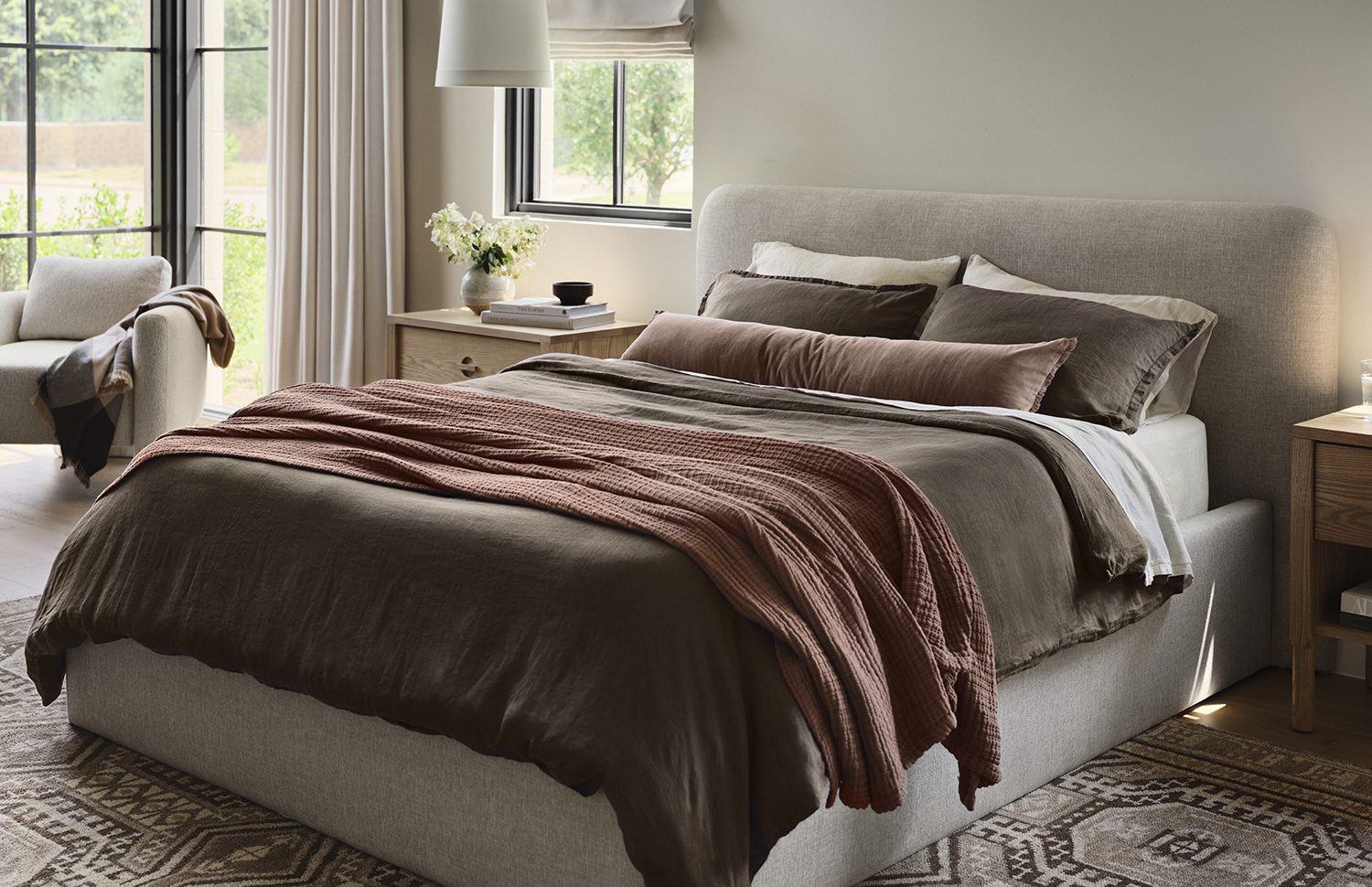For whatever reason, design faux pas tend to run amok in bedrooms. If we had to guess, it’s probably because these spaces are out of sight, out of mind, so naturally, they’re a breeding ground for clutter, disorganization, and, for lack of a better term, chaos. From a lack of storage and ambient lighting to too-small rugs, and zero wall decor, apparently a lot can go wrong when designing a bedroom.
So, we tapped our design team to share the 18 bedroom design mistakes they can’t help but notice, starting with the most common offender in the number-one spot. Keep scrolling for their list of bedroom design faux pas, plus what to do instead:
#1: Matching Bedroom Sets

Buying a big-box bedroom set (or living room set, for that matter) is an absolute designer no-no, but nonetheless is incredibly common! We always recommend mixing and matching your dresser, bed frame, and nightstands to create a sense of contrast, whether in color, texture, material, or silhouette. Forgoing the matchy-matchy set doesn’t have to be more expensive — hit up thrift stores or re-sale sites for one-of-a-kind pieces.
#2: Simply not decorating it at all

We get it: bedrooms are literally behind closed doors and often fall to the bottom of the project list. We completely agree that furnishing a living room or dining room should take priority. But it’s so important to create an inviting and comfortable space where you can relax, unwind, and clock some much-needed sleep, and let’s face it: sheet curtains and a floor mattress will actively cause stress.
#3: Buying a too-small rug

Rug scale is a design no-no we consistently harp on, because it immediately makes a space feel off. Follow these designer guidelines to select the perfect rug for your bed size. (Hint: at the very least, the bottom two legs of your bed frame should sit comfortably on the rug.)
#4: Buying too big of a bed

The opposite of a too-small rug? Too big of a bed. Your bed size should be appropriate for your space. If your bedroom is on the smaller size, you might want to swap the king bed with no storage for a queen plus a dresser. Just make sure you have at least two to three feet of space between the perimeter of the bed and any walls or furniture.
#5: Lack of mood lighting
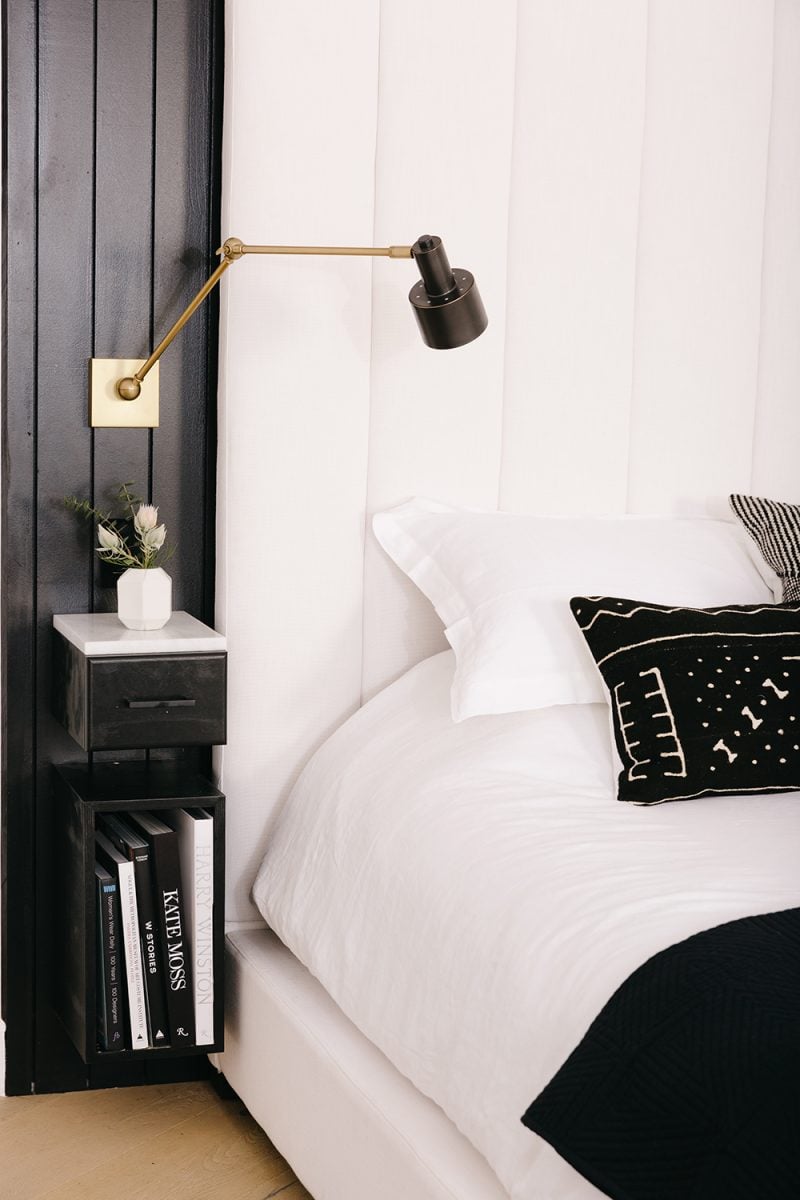
Layered lighting is critical in every space, but especially in a bedroom. Your space should include at least two to three additional lighting sources beyond overhead. To set the mood for serenity and nightly reads (among other things), invest in a nightstand lamp or hang wall sconces (there are endless beautiful plug-in options that don’t require drilling). Round off an accent chair with a floor lamp, or top your dresser with a cute table lamp.
#6: No nightstand storage
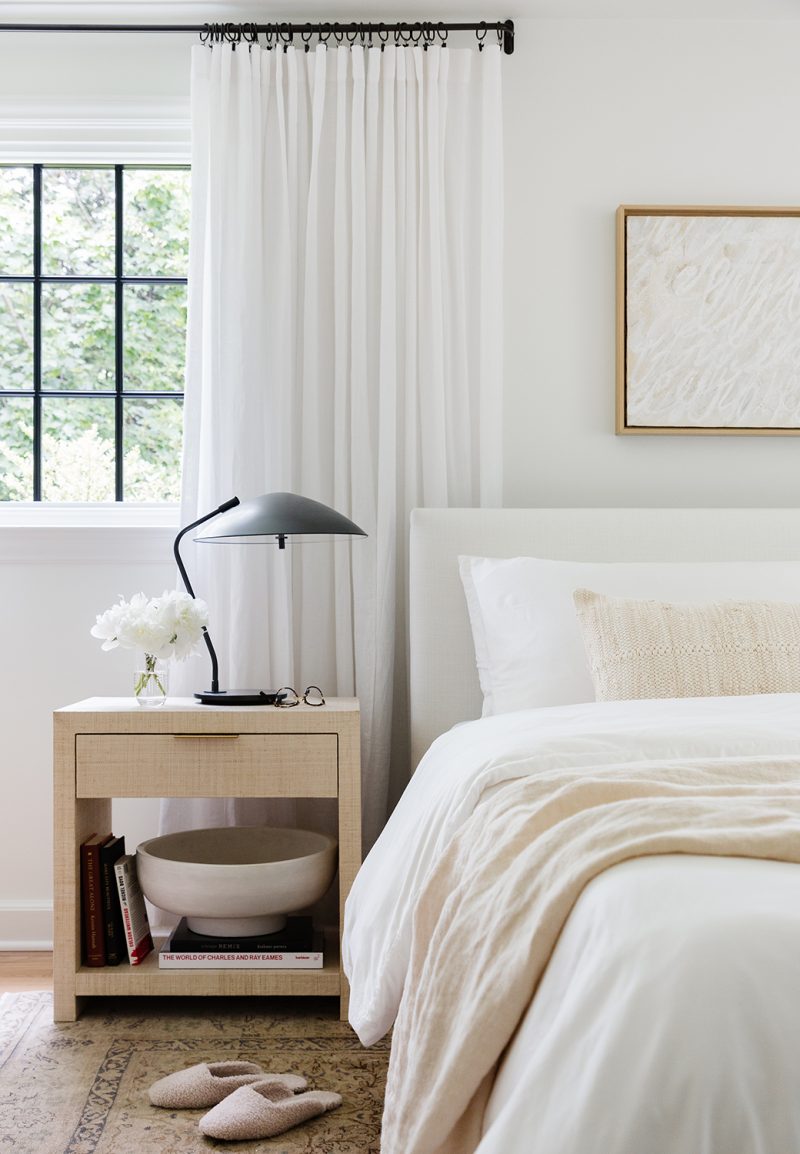
Be realistic about your nightstand needs. While we love a statement pedestal or a delicate glass and brass number, sometimes storage is necessary. If you must have bedtime comforts on hand (eye masks, books, reading glasses, water, phone charger, hair tie, etc.), do yourself a favor and invest in nightstands with drawers or shelving. If you have open shelving bedside, don’t forget to stash a decorative bowl or basket to catch loose ends.
#7: Prioritizing looks over functionality
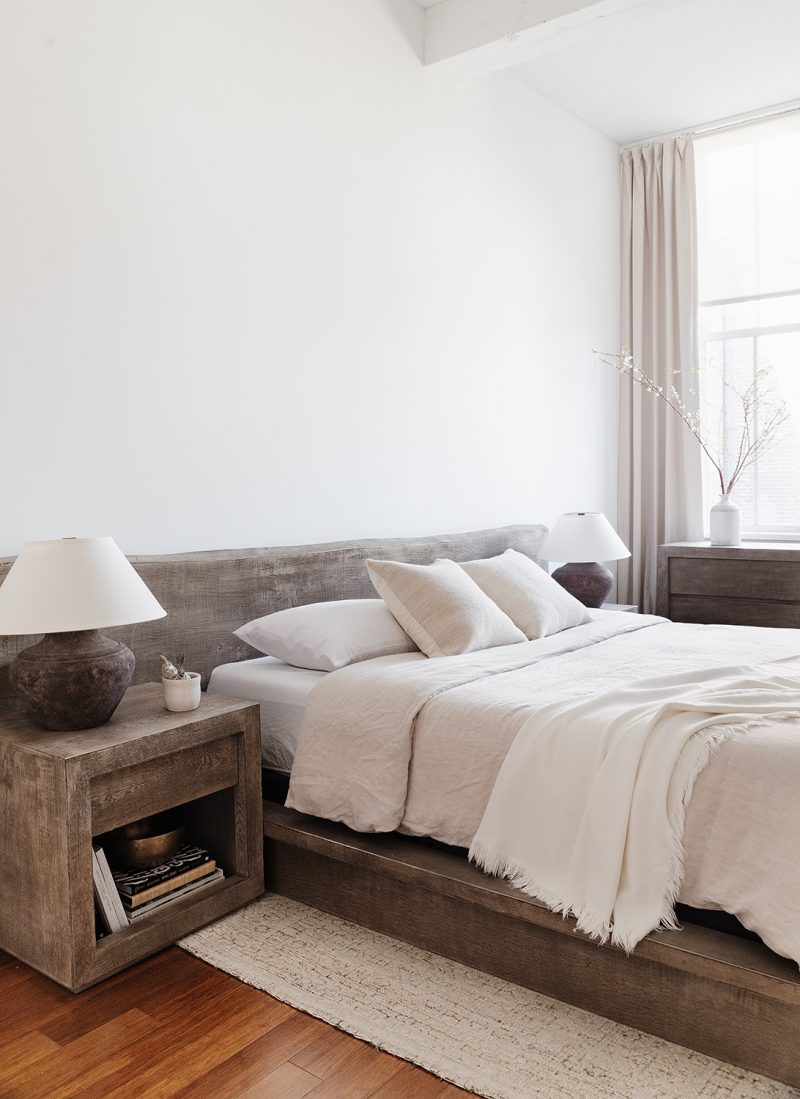
In that vein, don’t be so inspirational about your bedroom design that you neglect realistic, functional needs. If you’re someone who tends to let clothes suffocate that pretty accent chair in the corner, make space for a hamper instead. If you need ear plugs, a sleep mask, and a host of necessities for quality sleep, make sure you have a place to easily stash them away when morning dawns.
#8: Putting your WFH setup in your bedroom

We get it: times are tough and we’re all looking for ways to accommodate remote working. Dual-functioning rooms are a reality in our post-2020 world. But if there’s another space for your WFH setup, embrace it. Allow your bedroom to remain a sacred resting space to maintain one last shred of work life balance.
If that’s simply not an option, be intentional about your WFH setup. Treat your desk like a vignette and add a gallery wall, shelving, or a mirror. Buy a desk that can double as a console table. And most importantly, tidy up your space when you log off — this is critical when trying to create boundaries between work and real life.
#9: Skipping a bed frame
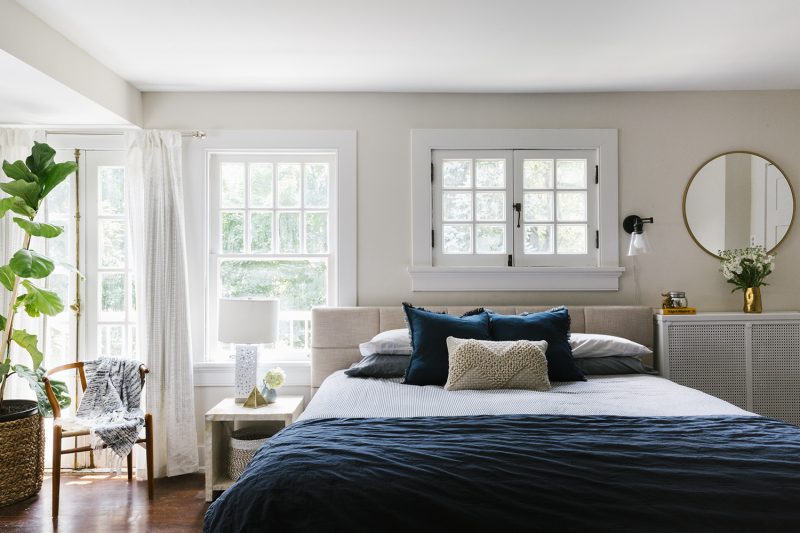
Unless you have a true zen minimalist style (with a recessed space or gorgeous stairs that lead to a platform bed), we always vote for a bed frame of sorts. Having a mattress on the floor immediately reads sloppy and a bit “college dorm,” whereas a simple bed frame literally and figuratively elevates the design.
#10: Going all-in on one design style
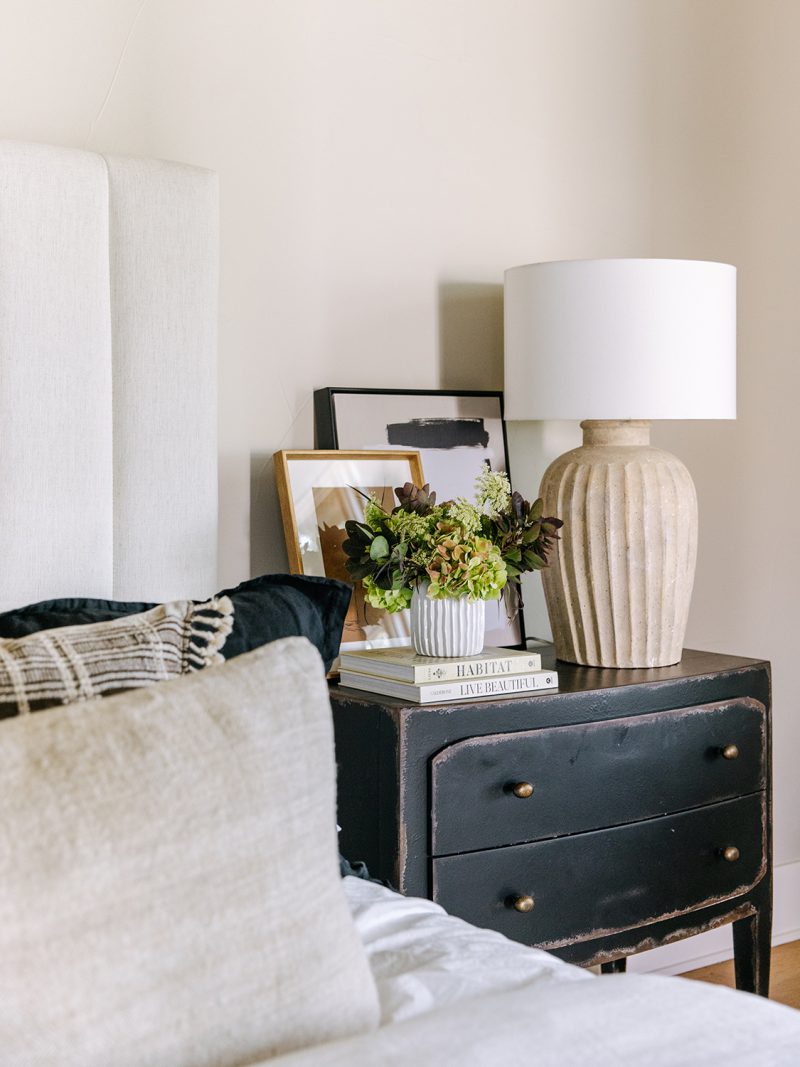
If your space is lacking character or personality, mix in furniture and decor from a different era. A little something old is often the secret sauce that “finished” rooms are craving. Whether it’s an antique dresser or a vintage Turkish rug, these storied touches make a space feel warm and original.
#11: Blank walls
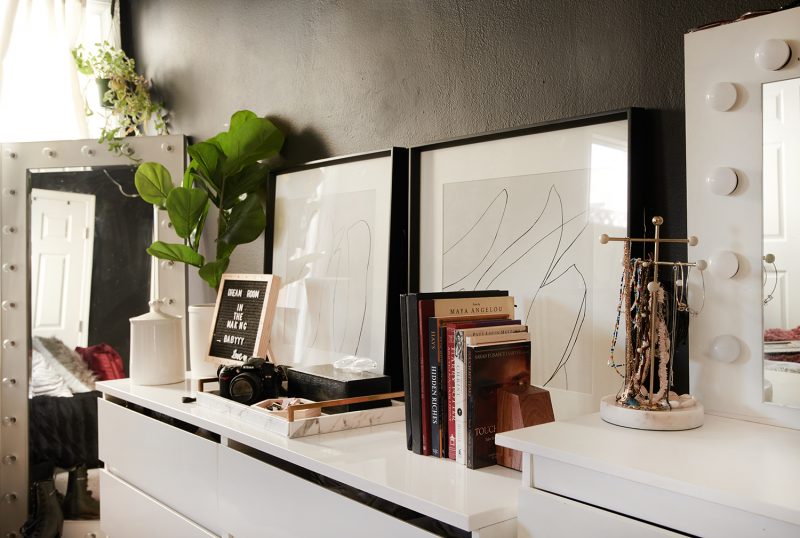
Art is the unsung hero of a well-styled space, and yes, that includes your bedroom. Rather than reaching for something cliche or overdone (like word art, for example), opt for pieces with personality and meaning.
#12: No above-the-bed moment
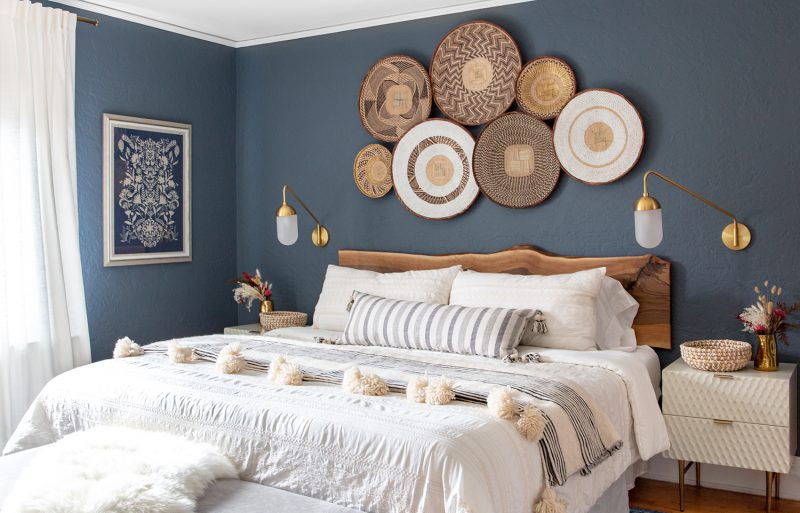
Your bed is the crowing jewel of your bedroom, so give it the attention it deserves with a lovely scene behind it. Whether it’s a headboard, accent wall, or artwork, add something to ground the look (but please let it be more original than your framed wedding photos). And yes, you can still do this in a more understated way with a low-slung headboard, like the above space.
#13: Off-scale nightstands
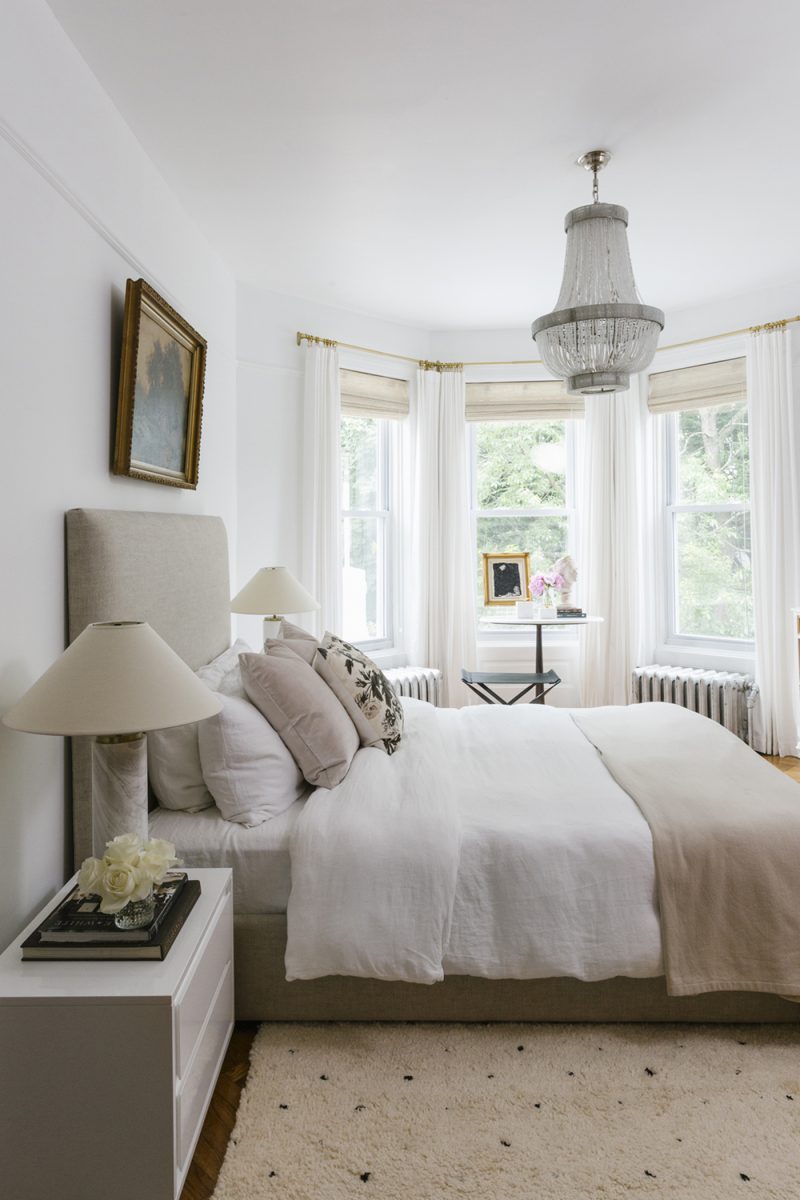
As a general designer rule, the top of your nightstand should be level with the top of your mattress, or two to three inches higher. Nightstand that are too tall or too low will make the space feel off-scale.
#14: One-dimensional bedding

Yes, there are some instances where a minimalist bedding situation really sings (we love the Scandinavian look). But for the most part, beds just look more complete with layers. Add in a few pillows at the top (we’ve got you covered with our favorite designer-approved pillow combos) or a throw blanket at the foot for a plush touch.
#15: Leaning stark and unfinished
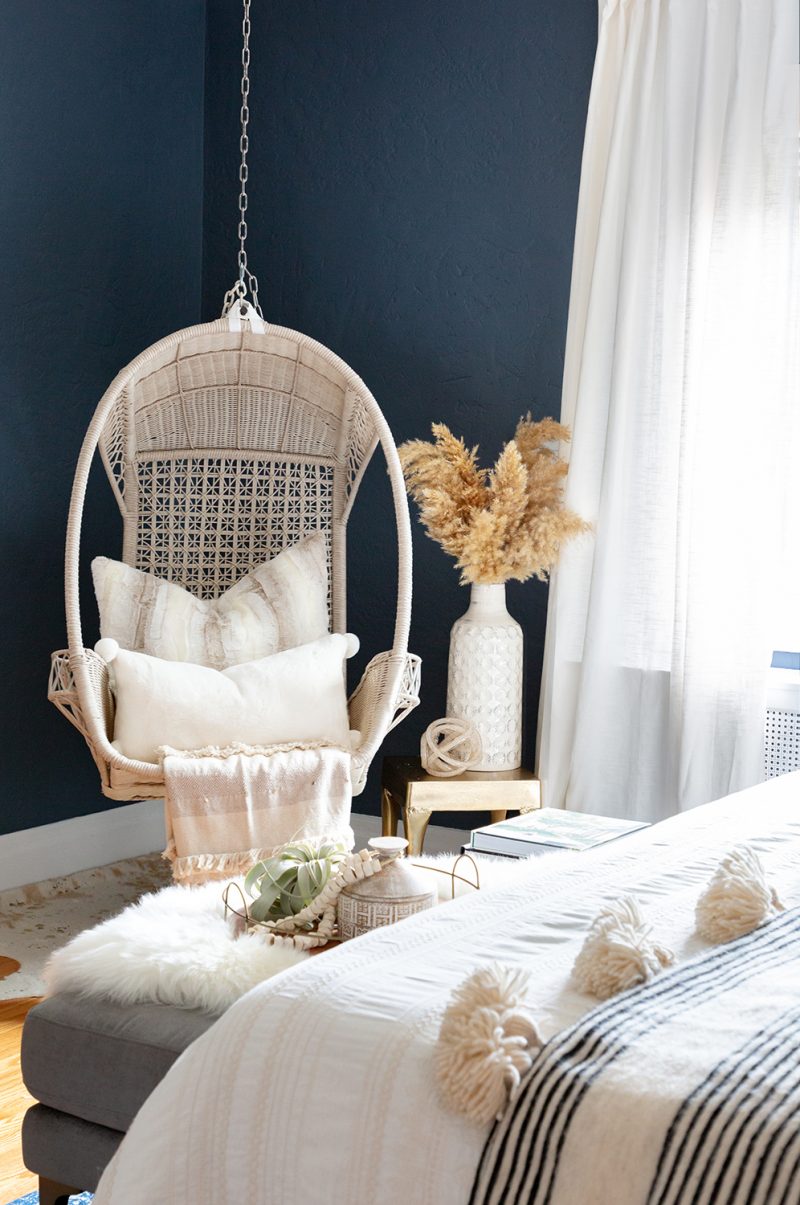
Bedrooms should always lean warm and cozy, even if you have a cool color palette. Add in texture via chunky blankets, a woven hamper, or wooden nightstands to make the space feel more interesting and inviting. Mixing and matching is the designer trick for a layered look.
#16: Not enough furniture
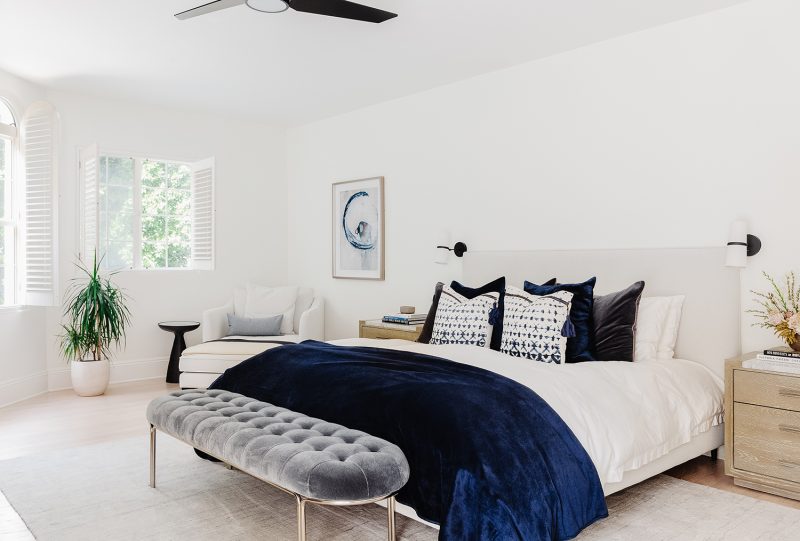
As the saying goes, “with great power comes great responsibility.” That sentiment applies to those lucky enough to have an enormous bedroom. A bed, nightstand, and dresser situation won’t suffice here — it should be furnished to scale. If you have a larger room, make sure to finish it off by adding a loveseat, accent chairs, a reading nook — something to fill all that empty space.
#17: Tall, bare ceilings
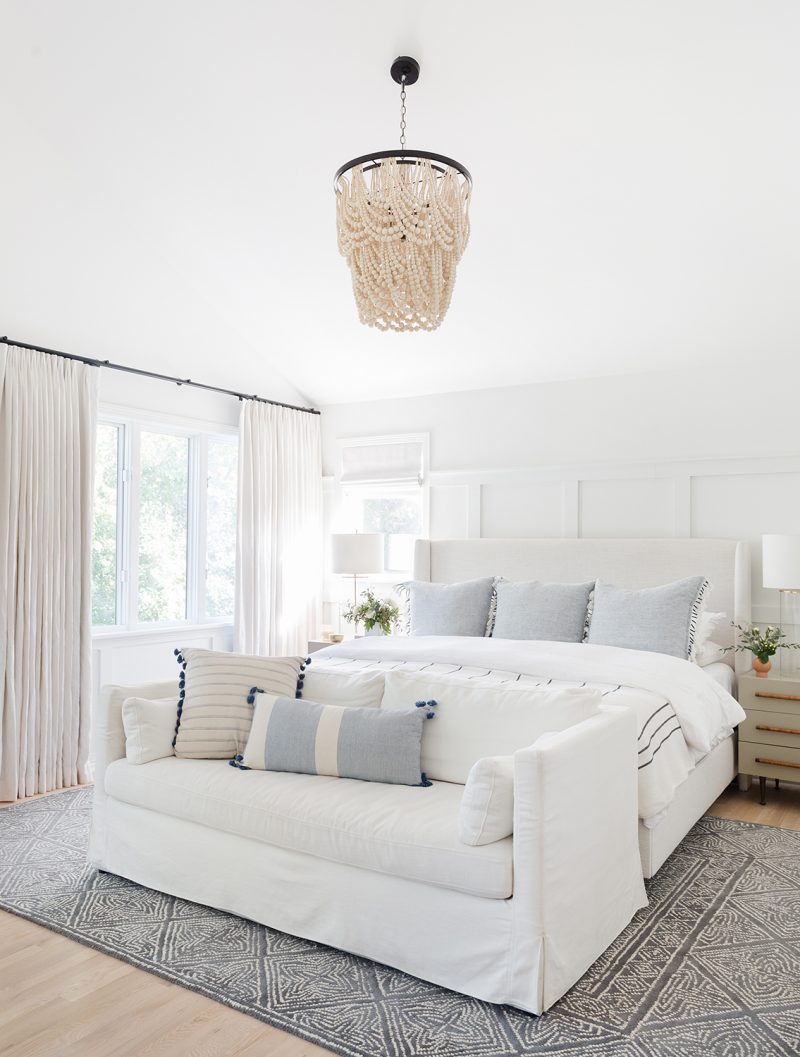
If you have tall bedroom ceilings, first count your blessings. Next, it’s important to help connect the soaring ceilings with the rest of the space. Whether that’s wallpaper, a statement chandelier, or an eye-catching canopy bed (or all three!), make an effort to fill the vertical space.
#18: Function-only curtains
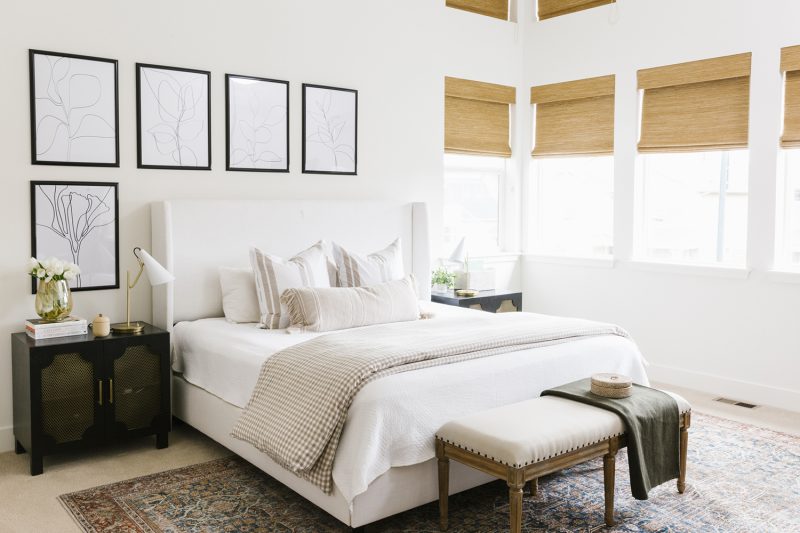
We get it: blackout curtains are amazing, especially in a bedroom. But there are so many design-conscious blackout curtains on the market these days — you don’t have to go with something that’s all function and no form. From traditional drapes to roman shades, there’s a “blackout” version of every window treatment — choose wisely!
Want expert advice on your actual bedroom, straight from an interior designer? Let’s start your project! In the meantime, follow along on Instagram for even more fun home ideas.

